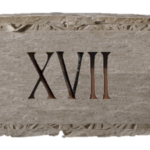In Roman numerals, 1699 is typically represented as “MDCXCIX.” Here’s the breakdown:
- M represents 1000.
- D represents 500.
- C represents 100.
- XC represents 90.
- IX represents 9.
So, when you combine these Roman numerals, you get 1699: MDCXCIX.
The next number after 1699 in Roman numerals is 1700, which is represented as “MDCC” in Roman numerals. Here’s the breakdown:
- M represents 1000.
- D represents 500.
- CC represents 100 + 100, which equals 200.
So, 1700 is represented as MDCC in Roman numerals.
Check your work here
Decimal to Roman Numeral Converter
Roman Numeral:
While 1699 may not be associated with as many well-known historical events as some other years, here are a few interesting facts about the year 1699:
- Treaty of Karlowitz: In 1699, the Treaty of Karlowitz was signed, ending the Great Turkish War (also known as the War of the Holy League) between the Habsburg Monarchy and the Ottoman Empire. This treaty marked a significant moment in European history as it resulted in territorial changes and a period of relative peace in the region.
- Founding of St. Petersburg: The city of St. Petersburg in Russia was founded by Tsar Peter the Great in 1703. While this event occurred a few years after 1699, it is closely related to the broader historical context of the time.
- Publication of “Moll Flanders”: The novel “Moll Flanders” by Daniel Defoe was published in 1722. While it was published a few decades after 1699, it is set in the late 17th century and provides a fictional glimpse into the life of a female criminal in that era.
- John Locke’s Influence: The philosopher John Locke, known for his ideas on political philosophy and empiricism, was active during the late 17th century. His work had a profound impact on the Enlightenment period and the development of modern political thought.
- Isaac Newton’s Later Work: Sir Isaac Newton, one of the most influential scientists in history, published his work “Mathematical Principles of Natural Philosophy” (often referred to as the “Principia”) in 1687. While this work predates 1699, it continued to shape scientific thinking and laid the foundation for modern physics.
- The End of the 17th Century: 1699 marked the end of the 17th century, a period of significant scientific, political, and cultural developments, including the Scientific Revolution, the Enlightenment, and the expansion of colonial empires.
These are some of the historical and cultural contexts surrounding the year 1699. While it may not be as well-known for specific events as some other years, it is part of a broader historical tapestry that shaped the world in the following centuries.

